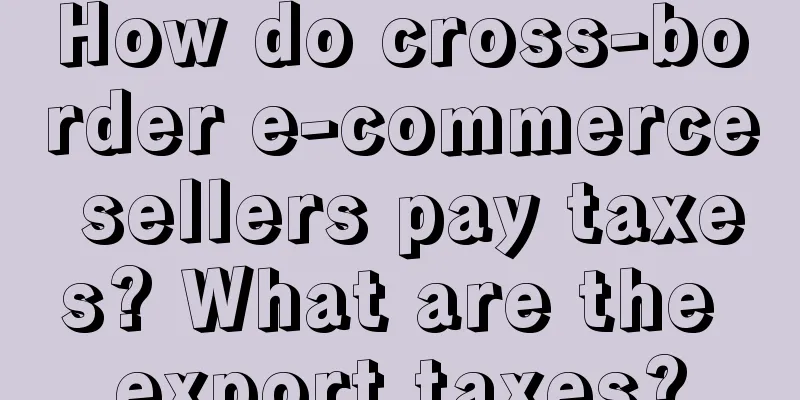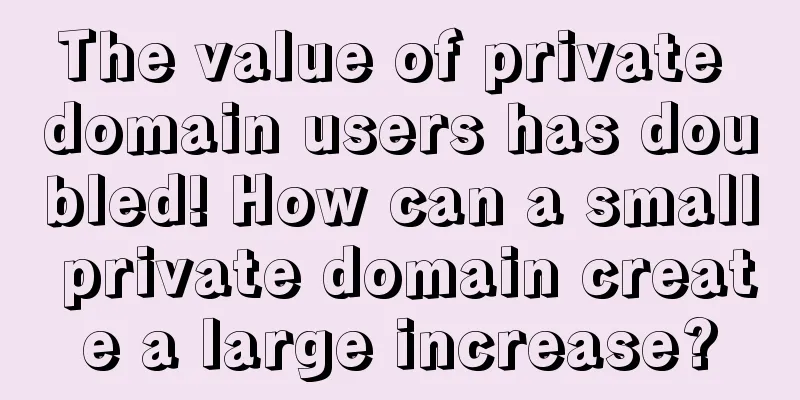How do cross-border e-commerce sellers pay taxes? What are the export taxes?

|
We all know that cross-border e-commerce is developing rapidly now. Many people want to do a good job in cross-border e-commerce. However, before opening a store, you need to understand the cross-border e-commerce platform and how to pay taxes. How do cross-border e-commerce sellers pay taxes? 1. How do cross-border e-commerce sellers pay taxes? In 2019, the single transaction limit for cross-border e-commerce retail imported goods is 5,000 yuan, and the annual transaction limit is 26,000 yuan. In the future, it will be increased as residents' income increases, and the policy will further relax restrictions on cross-border consumption by Chinese residents. 1. Import tariff: refers to the tax that needs to be paid on imported goods passing through a country's customs border. Calculation method: ad valorem, ad quantity, compound taxation, and some special commodities will use special calculation methods. 2. Luggage and postal tax: refers to the import tax on luggage and postal items 3. Value-added tax: my country stipulates that the basic value-added tax rate is 17%. For certain important materials related to national economy and people's livelihood, the value-added tax rate is 13%. 4. Consumption tax: At present, the country only collects consumption tax on four types of products. The first is consumer goods whose excessive consumption will cause harm to health, such as tobacco, alcohol, firecrackers, etc.; the second is luxury goods; the third is high-energy consumption products; and the fourth is non-renewable petroleum-based consumer goods. 2. What are the export taxes? 1. Tariffs: Importing goods from countries/regions outside the EU to EU member states requires paying tariffs, and the tax rate may range from 0% to 25%. 2. Import VAT: Import VAT is usually a tax that can be refunded. 3. VAT: Value added tax, or VAT for short, is a tax levied on the value added generated during the circulation of goods or services. In Europe, sales VAT is levied by VAT-registered merchants on their sales in Europe and reported and paid to the relevant national tax authorities. If you want to open a cross-border e-commerce store, you must pay taxes according to the rules, because this is the responsibility and obligation of every citizen. Here we also remind you to understand the above types of taxes and then pay taxes according to the law. Recommended reading: How do small businesses start cross-border e-commerce? What do they need to plan? How is Shopee cross-border e-commerce? How to join? Is Shopee cross-border e-commerce reliable? Is it worth doing? |
<<: Is the refund rate on Shopee high? Is it okay if I don't agree to a refund?
>>: How much does it cost to open a store on Amazon without supply? How to do it?
Recommend
Without investing in influencers, how can brands cold-start on Xiaohongshu?
How can brands do a cold start on Xiaohongshu? Wha...
With over 25,000 stores worldwide and over 100 million members, how does Mixue Bingcheng plan and operate its private domain?
"You love me, I love you, Mixue Ice City is s...
Do I need to purchase goods to copy sell on Amazon?
For sellers who want to sell products on Amazon, a...
How to make cost-effective content marketing more effective than advertising? Understand the difference between the two in one article
This article starts from the underlying logic of t...
The good news is that the advertising fees in the drama market are back again!
When we thought that all brand advertisements were...
Is Amazon Black Friday cheaper? How can merchants increase Amazon Black Friday sales?
Everyone knows about the discounts on Double Eleve...
Short play: Pitcher manages money: "Spend money like water", loses 100,000 in one night
The trend of short dramas in 2023 is booming and s...
As millions of small shops embrace instant retail, who will make the first pot of gold?
Traditional e-commerce has already met our planned...
There is no ceiling for those who understand brand operation
This article focuses on brand operations and share...
Family members! Who knows! Can private domain traffic be done this way?
As the traffic dividend gradually declines, it is ...
Why do these extremely ugly Crocs become so popular again?
This article takes the resurgence of Crocs as a st...
Brands can’t figure out Xiaohongshu’s traffic “intentions”
Xiaohongshu is accelerating its commercialization,...
Is cash on delivery common on independent websites? What are the payment methods?
There are many merchants who run independent websi...
Compared to physical products that are easy to go viral, how can “online products” create social currency?
The social currency of a brand is a tool for forgi...
Will delayed delivery from Shopee affect traffic? What happens if delivery is overdue?
After we open a store on Shopee, we need to ship g...









